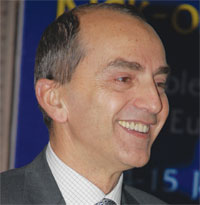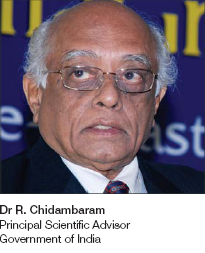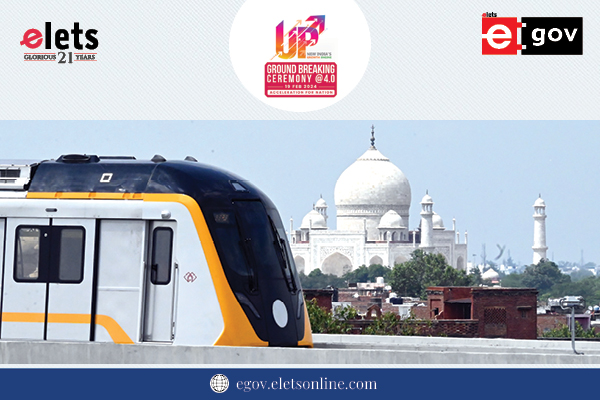

Alberto Masoni INFN & EU-IndiaGrid2 Project Manager
When scientists at the European Organisation for Nuclear Research (CERN), Switzerland, developed a data sharing system for physicists 21 years ago, little did they know that it would blossom into the World Wide Web (www) and revolutionise communications creating an array of benefits such as the development of international collaborative research infrastructures. Collaboration has always been very much part of the success of the web according to Tim Berners-Lee, the man attributed with inventing the world-wide web. “The human nature that I came across from the early web developers was very open, very giving, people very much working together, encouraging each other, very much full of excitement, getting a kick out of making things work together. The collaborative spirit was a driver for most of the people.1”
As the web has developed and global collaboration becomes a feature of everyday life, collaboration in scientific research between Europe and India has also grown. The development of Grid Computing which sees the application of computational resources from numerous computers in a single network, now allows scientists to share information and computer power. Often compared with the electrical power grid offering users access to a massive reservoir of computational power, Grid Computing can potentially transform any desktop PC into the equivalent of a ‘super’ computer.
The Worldwide Large Hadron Collider (LHC) Computing Grid (WLCG) is the perfect example of collaboration between a global network of researchers. The WLCG links grid infrastructures and computer centres around the world including India, storing and analysing the immense amounts of data generated by the LHC at CERN, the most powerful physics experiment ever built. The grid will combine the computing resources of more than 100,000 processors from more than 170 sites in 34 countries and will be accessible to thousands of physicists globally who will have real-time access to a massive 15 petabytes of data annually, the equivalent of the storage capacity of 20 million CDs.
The development of Grid Computing has gone hand-in-hand with advances in global computing connectivity and also e-Infrastructures – innovative research environments in which researchers, whether working in the context of their home institutions or in national or multinational scientific initiatives, have shared access to unique, distributed scientific facilities including data, networks, tools and computing resources.
The Indian Landscape
Two main grids exist in India – the Regional WCLG Grid and GARUDA, the India National Grid Initiative (http://www. garudaindia.in/). GARUDA, managed by EU-IndiaGrid2 partner the Centre forDevelopment of Advanced Computing CDAC), is a collaboration of scientifi c and technological researchers on a nationwide grid comprising computational nodes, mass storage and scientifi c instruments which will provide the technologicaladvances required to enable data and compute intensive science for the 21st century.
With the growth of Indian Telecom and IT skills, Indian connectivity is allowing the evolution of e-Infrastructures uniting universities and research institutes. The Indian National Knowledge Network (NKN) aims to interconnect all higher education and scientifi c development institutions, some 5,000, with a high-speed network in the order of 10s of gigabits per second, providing the backbone for a scientific research e-Infrastructure in India. With 14 GARUDA sites currently connected with the NKN, including two LHC computing sites in Mumbai and Kolkata, it is clear that work to develop collaborative research communities is advancing well.
The establishment of a reliable and quick connection between India and Europe has also been improving rapidly in recent years leading to the fi rst fi le transfer in 2007 between CERN and India on the WLCG. Prominent landmarks have seen the establishment of the 45 Mbps ERNET-GEANT link and routing of regional WLCG data to CERN and subsequently EU-IndiaGrid traffi c to EGEE, the European Grid Infrastructure, in 2006. In 2008, the GEANT-ERNET link was upgraded to 100 Mbps and then to 175 Mbps in 2009 which included an  upgrade of domestic bandwidth for regional the WLCG network. 2008 also saw a dedicated 1 Gbps TIFR-CERN link for LHC research and peering with GEANT1 in 2009. In April 2009, the fi rst phase of the NKN was initiated while February 2010 saw a major milestone achieved with the establishment of the The Trans- Eurasia Information Network (TEIN3) (http://www.tein3.net/) 2.5 Gbps GEANT link to India. This made India a vital lynchpin in a global grid infrastructure by connecting Europe and Asia-Pacifi c countries to provide a high capacity Internet network for research and education communities across Asia- Pacifi c. Finally, in March 2010, the NKN received fi nal approving and full funding from the Indian Government (http://pib. nic.in/release /release.asp?relid=59878).
upgrade of domestic bandwidth for regional the WLCG network. 2008 also saw a dedicated 1 Gbps TIFR-CERN link for LHC research and peering with GEANT1 in 2009. In April 2009, the fi rst phase of the NKN was initiated while February 2010 saw a major milestone achieved with the establishment of the The Trans- Eurasia Information Network (TEIN3) (http://www.tein3.net/) 2.5 Gbps GEANT link to India. This made India a vital lynchpin in a global grid infrastructure by connecting Europe and Asia-Pacifi c countries to provide a high capacity Internet network for research and education communities across Asia- Pacifi c. Finally, in March 2010, the NKN received fi nal approving and full funding from the Indian Government (http://pib. nic.in/release /release.asp?relid=59878).
According to Dr R. Chidambaram, Principal scientifi c advisor to the Government of India, these are crucial developments for Indian research. “The successful working of the initial phase of the multi-gigabit NKN, Indian Certifi cation Authority, and participation in TEIN phase 3 are some of the important building blocks for supporting virtual research communities in India and their
collaboration work with other countries.”
ICT SUSTAINABLE INFRASTRUCTURES
The EC-funded initiative EU-IndiaGrid2 (http://www.euindiagrid.eu) is a vital cog in the engine acting as a bridge across European and Indian e-Infrastructures and fostering evolution to ensure sustainable scientifi c, educational and technological collaboration. The project “improves the interoperation of e-Infrastructures and Grids between Indian and European Grid initiatives, supporting the development of sustainable e-Infrastructures cross Europe and India.” says Alberto Masoni, Director of Research at INFN – the Italian National Institute of Nuclear Physics & EU-IndiaGrid2 Project Manager.
Interoperability and interoperation between the major European and Indian Grid infrastructures, the European Grid Inititive (EGI) and GARUDA respectively, is a critical step towards establishing a cross-continent Grid infrastructure. EUIndiaGrid2 is paving the way for a ‘seamless’ global integration of Grid infrastructures. To achieve this, bilateral work is required to evolve towards a common standard.
THE IMPACT
The implications of Grid computing are not restricted to the field of Physics. EUIndiaGrid2 supports the development both of stronger ties between European- Indian Grid Computing networks, and between science communities  such as Climate Change, Biology, Material Science and of course High Energy Physics.
such as Climate Change, Biology, Material Science and of course High Energy Physics.
As Professor Kanhere, University of Pune and EU-IndiaGrid2 partner explains, Grid Computing has revolutionised his research into Material Science – “Due to rapid advances in material science, new materials are being produced in laboratories. The trend is to have designer’s materials, new molecules, artifi cial low dimensional systems, high temperature superconductors, GMR materials etc. These are complex systems having multi components and low sysmetry. We need to understand their properties and also simulate their behaviour under different conditions, the key to which is predictive power. Accuracy is demanded in these calculations requiring detailed computations using realistic interactions and theories putting substantial demand on computational power. Grid computing, with its high computational capacity is a possible way to address such challenges.”
Thanks to EU-IndiaGrid2, Professor Kanhere and the University of Pune are now collaborating with the Abdus Salam International Centre for Theoretical Physics (ICTP) in Italy and the French Atomic Energy Commission to develop applications for Material Science.
EU-IndiaGrid2 also assists Karen Lupkow’s research at the School of Biological Sciences, Cambridge University by furthering EU-Indian links in Biology with the National Centre for Biological Science, Bangalore. “In addition to providing valuable simulation space, EU-IndiaGrid2 keeps my collaboration with Bangalore alive. It is much easier to learn from each other and maintain an exchange of ideas with the support from EU-IndiaGrid2. Witht he help of EU-IndiaGrid2 funds, we are organising an international workshop for 2011 on Biology, which we hope will benefit not just us, but the wider scientific community.”
Collaboration in the fi eld of climate change is also taking place between the Indian Institute of Technology, Delhi and ICTP. Stefano Cozzini, EU-IndiaGrid2 technical manager says “EU-IndiaGrid2 infrastructure makes more computational resources available to increase and enlarge climate change simulations tohave more complete climate change modelling scenarios for the South- East Asia region. A major international EU-IndiaGrid2 conference in 2011 will discuss role of grid infrastructure for climate change.”
With human and technological partnerships being formed and sustained between India and Europe it is clear that the collaborative spirit that was so much a driving force at the heart of the Tim Berners Lee’s early development of the World Wide Web is still the key to maximising the potential of international ICT research infrastructures.
Be a part of Elets Collaborative Initiatives. Join Us for Upcoming Events and explore business opportunities. Like us on Facebook , connect with us on LinkedIn and follow us on Twitter, Instagram.











